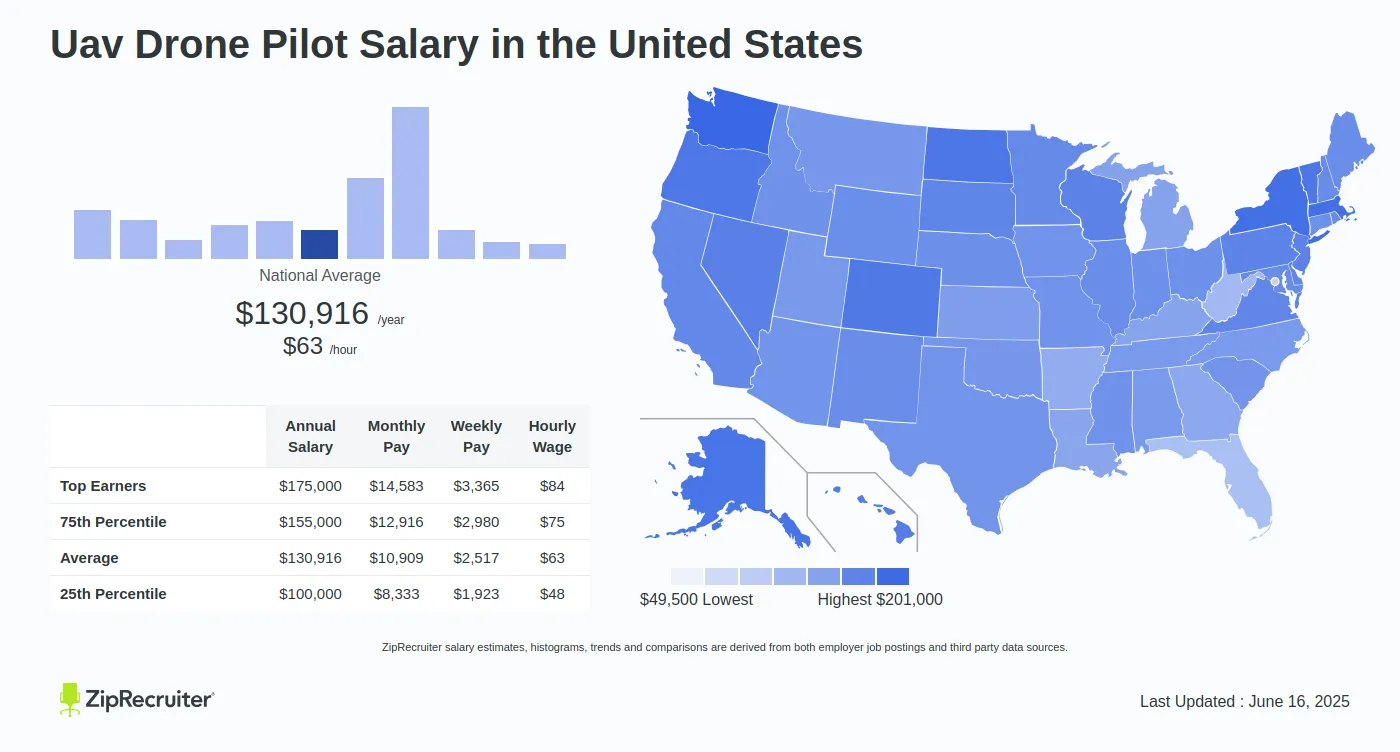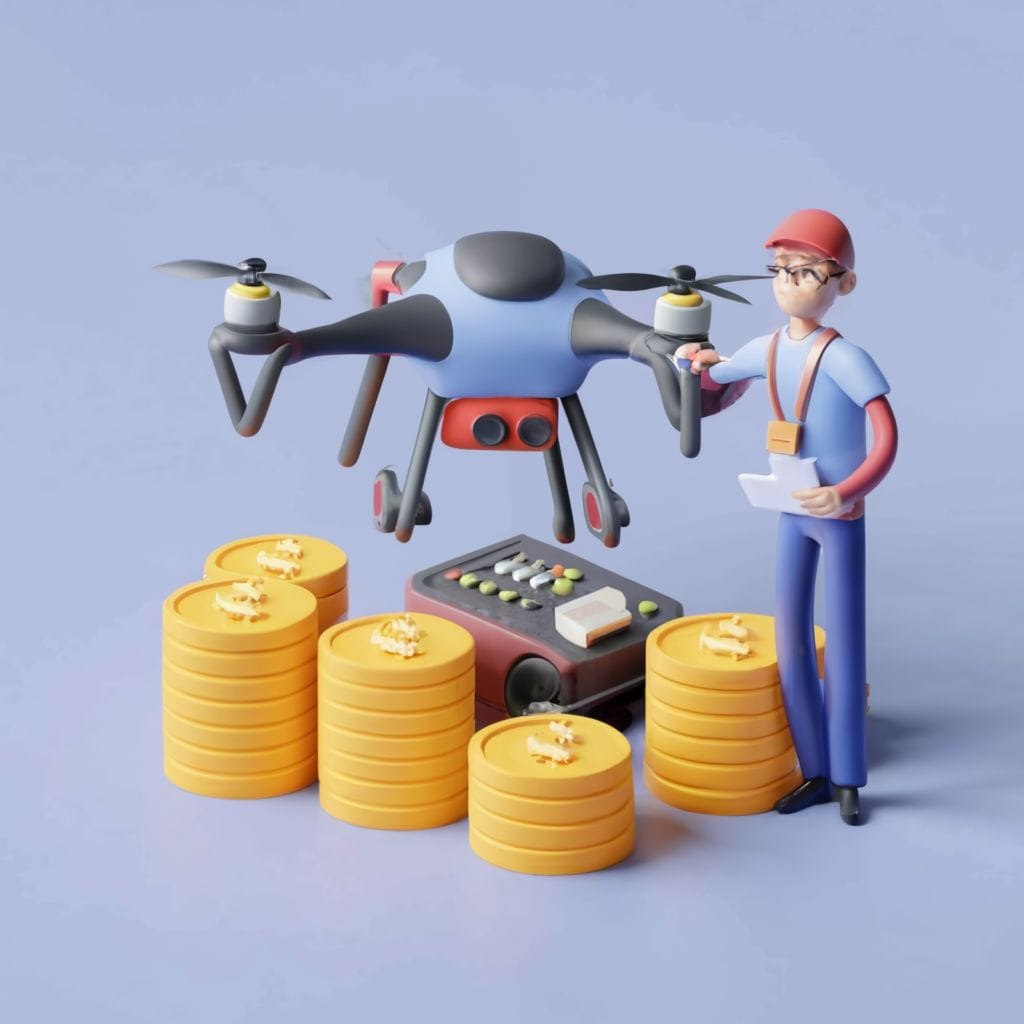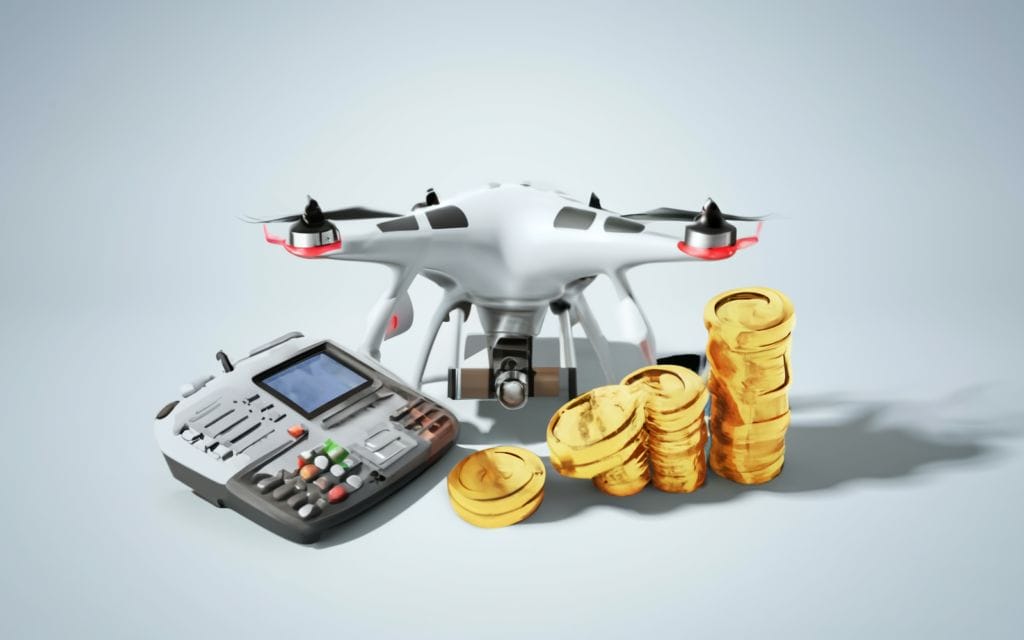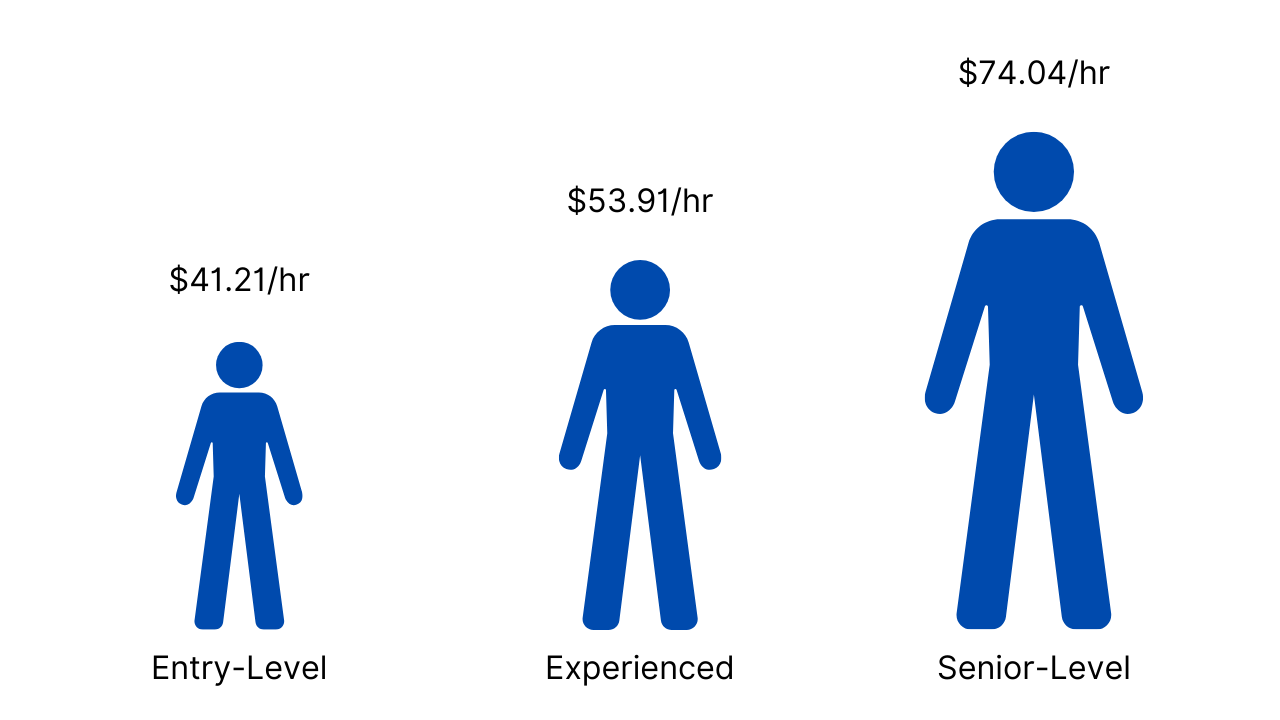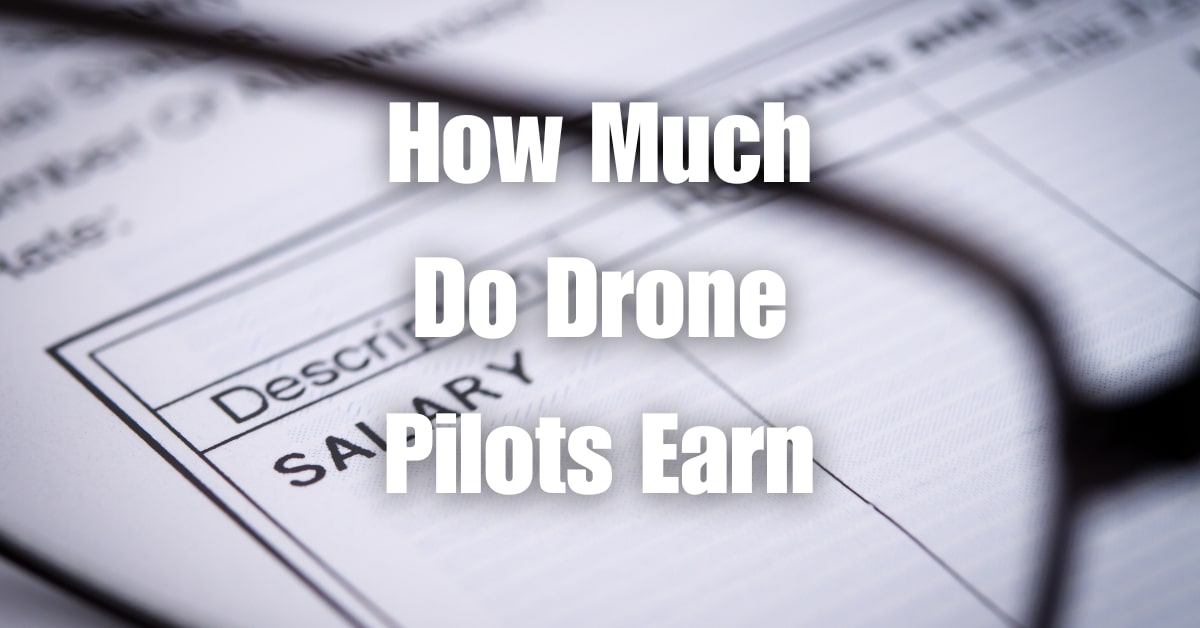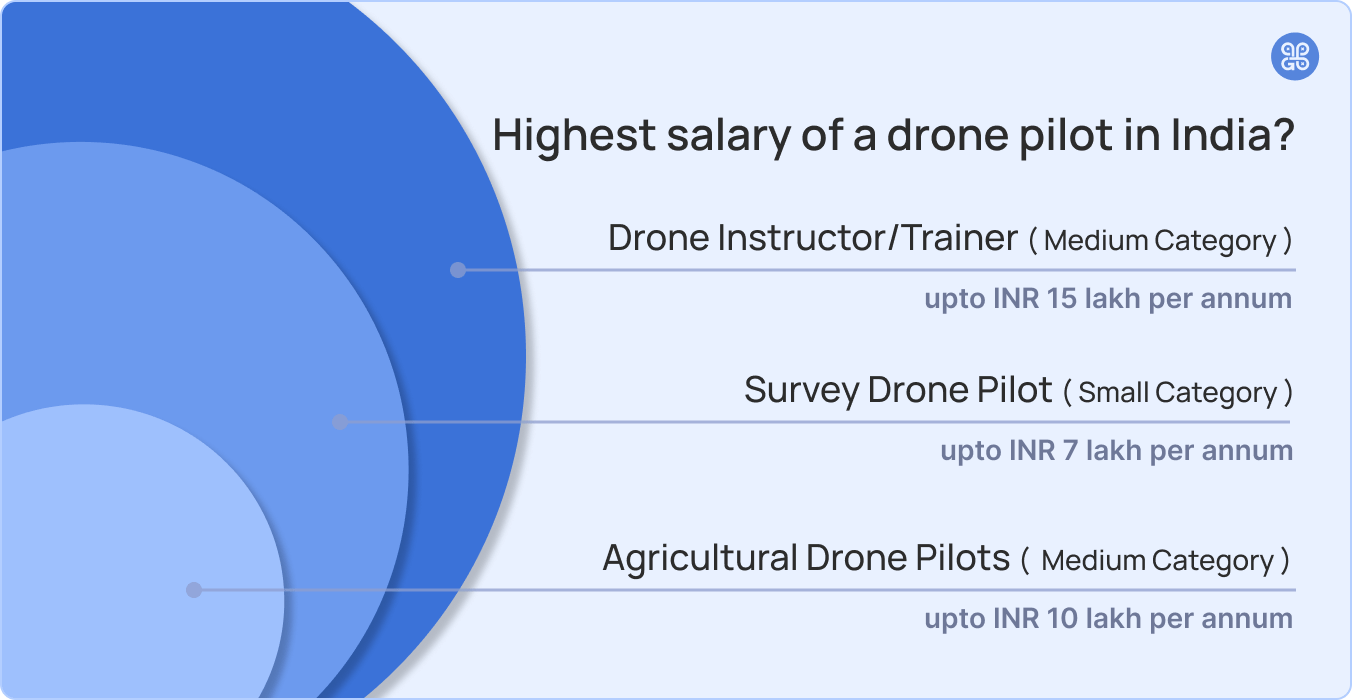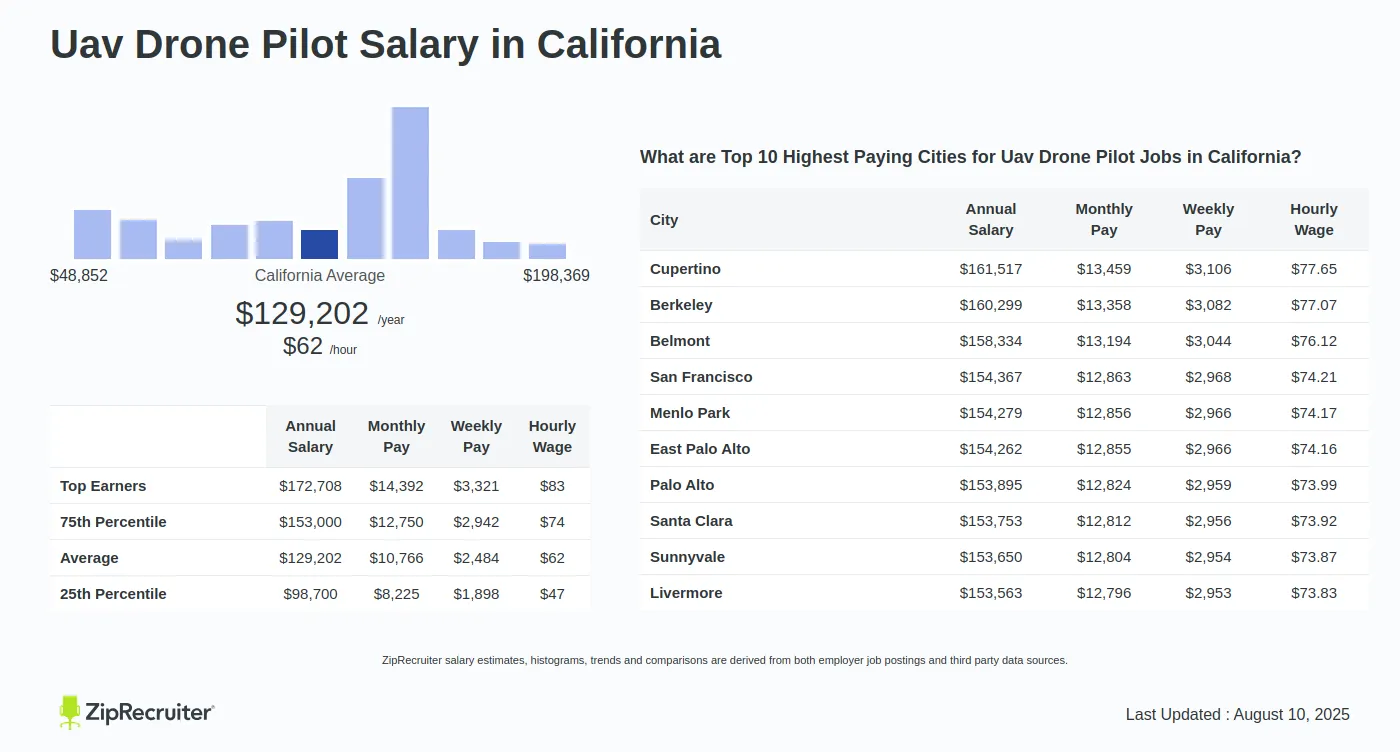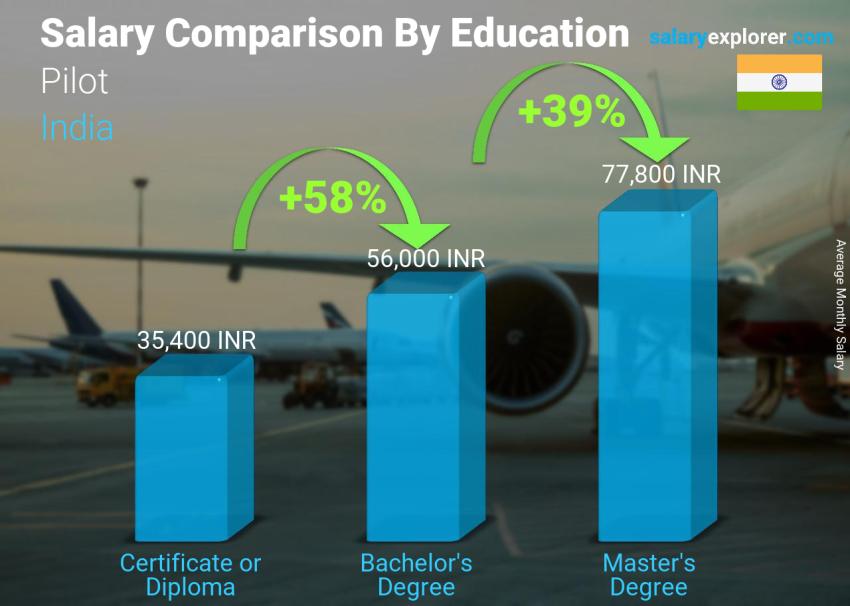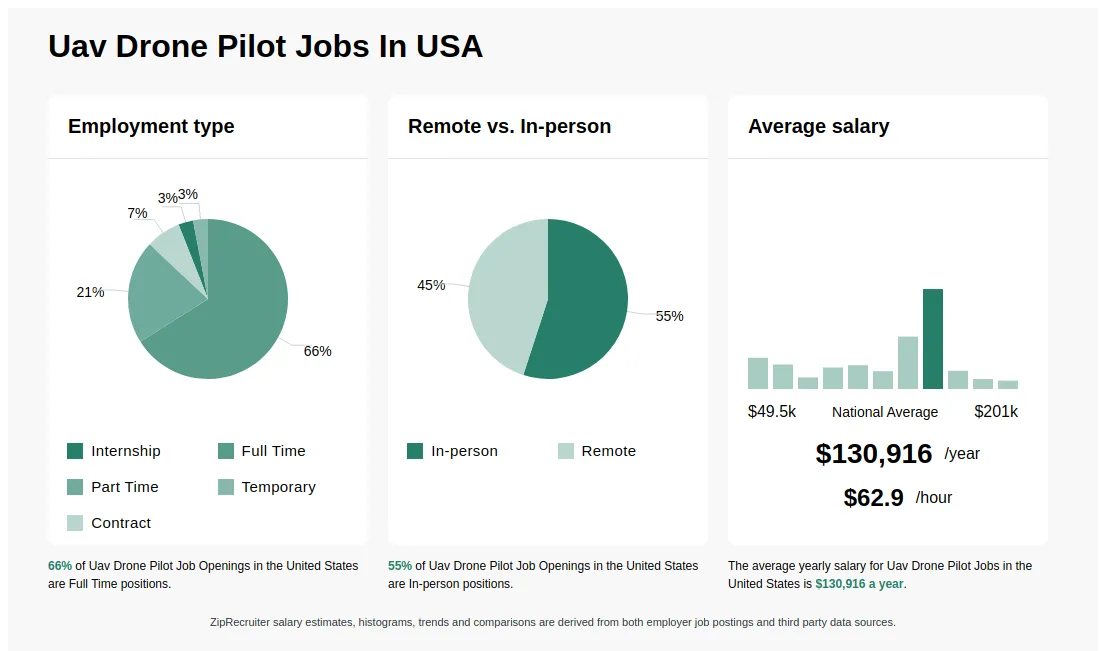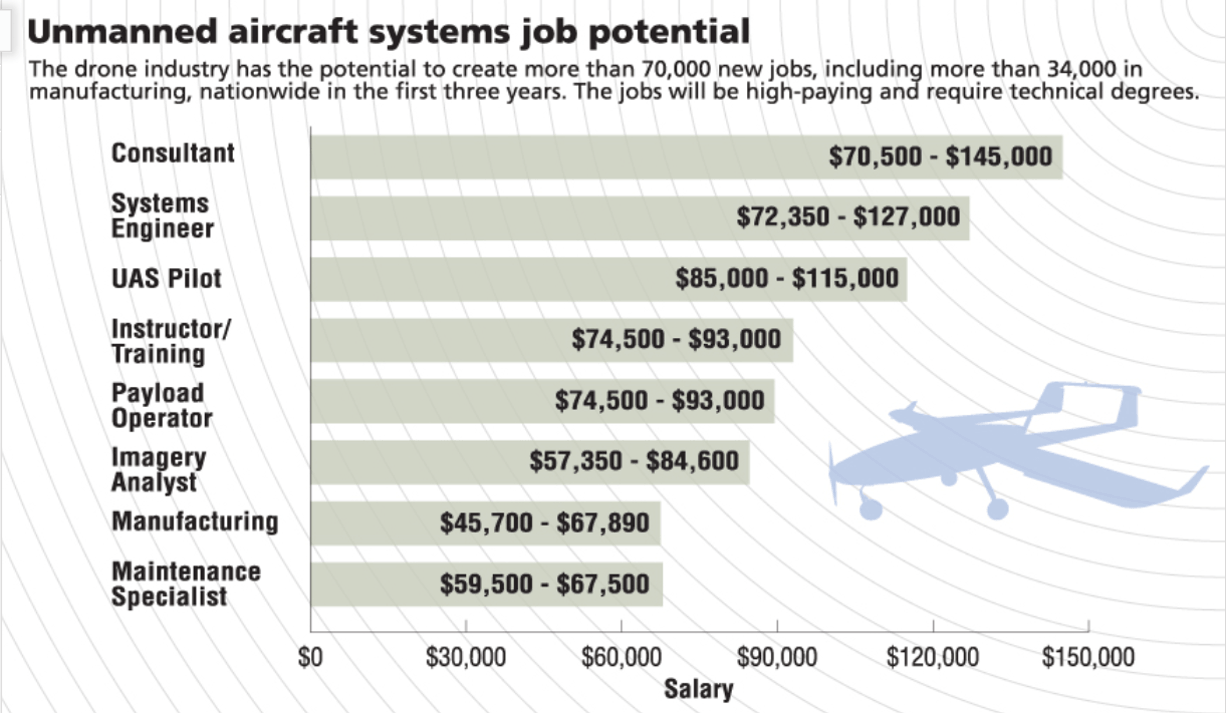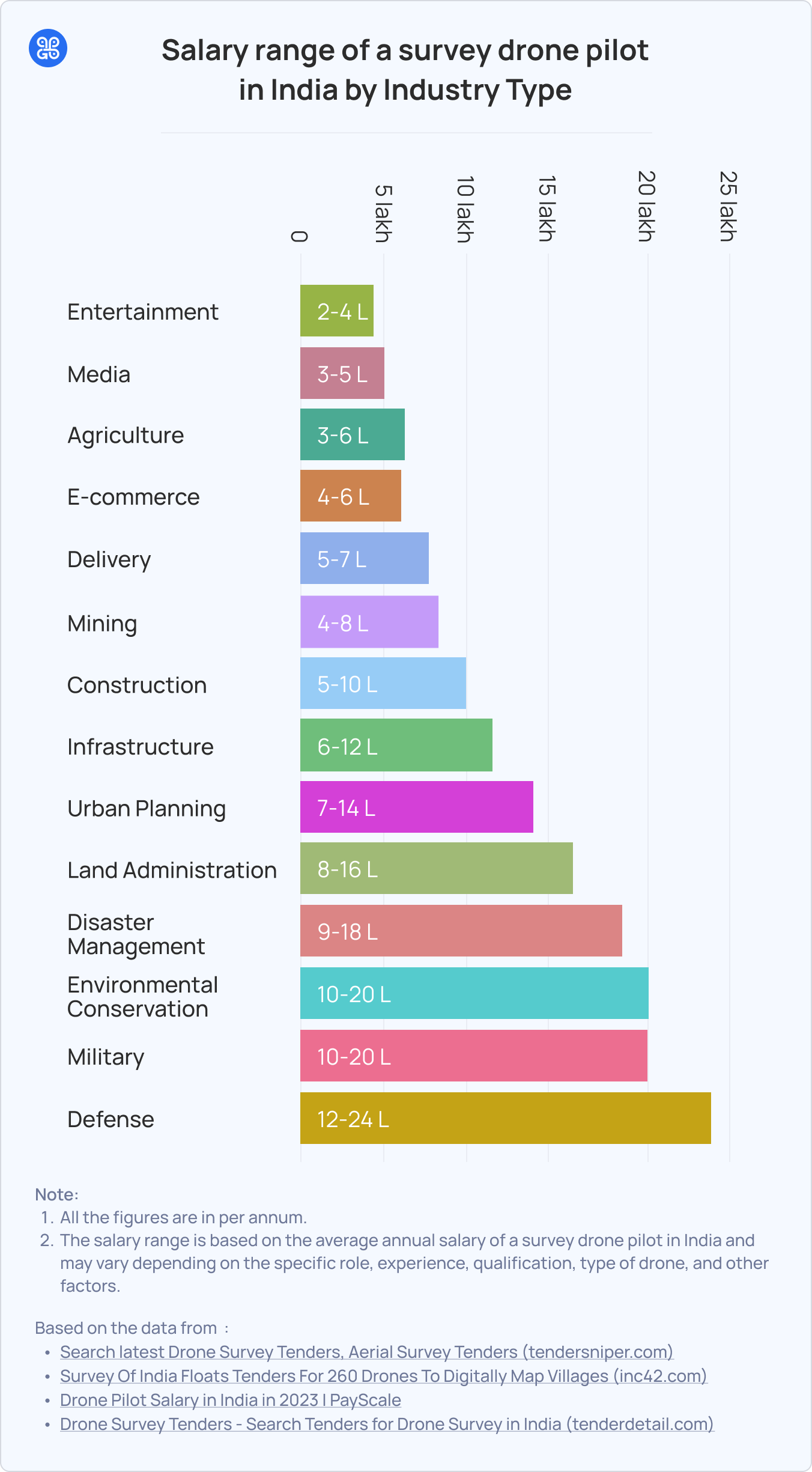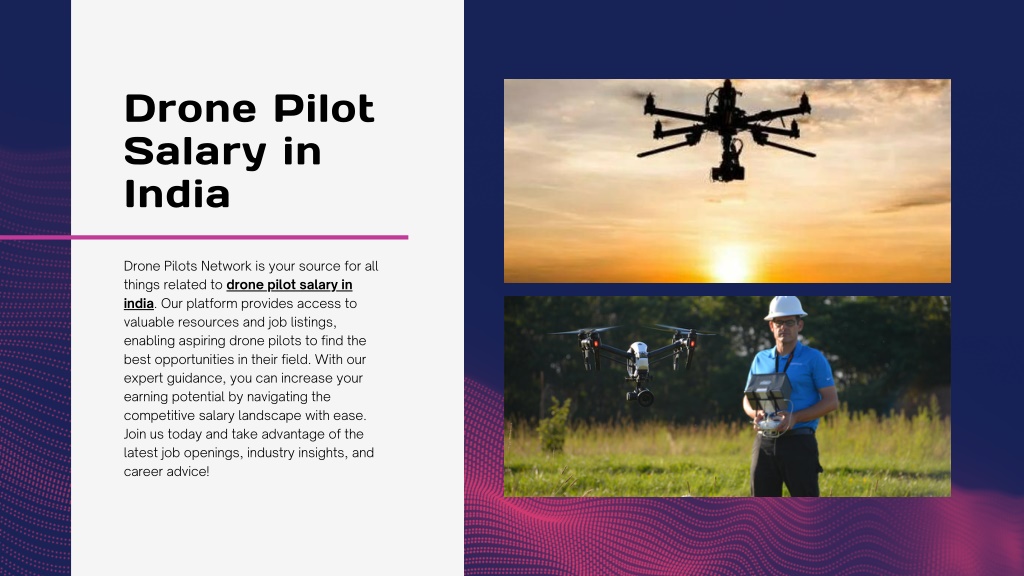Average Salary Of A Drone Pilot
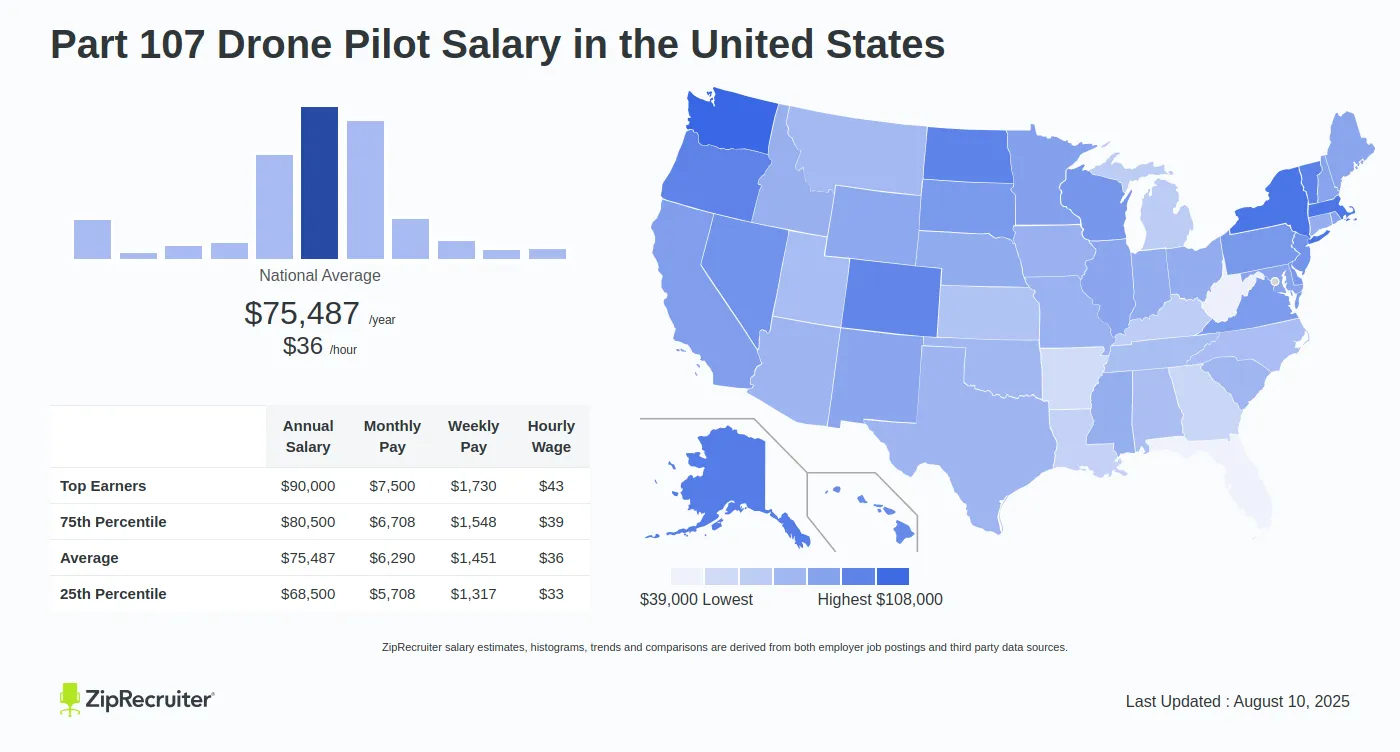
Drone pilots are in demand, but are the salaries keeping pace? New data reveals a fluctuating landscape for compensation in this rapidly evolving field.
This report dissects the average drone pilot salary, highlighting regional disparities, experience-based pay scales, and the impact of certifications on earning potential.
National Averages and Regional Variations
The national average salary for a drone pilot in the United States hovers around $75,000 per year. This figure, however, masks significant variations based on location.
Pilots working in metropolitan areas, particularly those with thriving industries like construction, agriculture, or filmmaking, often command higher salaries. Cities such as Los Angeles, New York, and Dallas report average salaries closer to $85,000 or higher.
Conversely, rural areas or regions with less demand for drone services may see average salaries dip below $65,000 annually.
Experience and Certification Matter
Entry-level drone pilots, often those with less than one year of experience, can expect to earn between $40,000 and $50,000. This range typically applies to those working under supervision or in support roles.
Experienced pilots, defined as those with three to five years under their belt, can see their salaries jump to $70,000-$90,000. This increase reflects their proven skills and ability to handle complex missions.
Those with more than five years of experience and specialized skills in areas like aerial surveying or infrastructure inspection can command upwards of $100,000 annually.
Holding a Part 107 certification is practically a minimum requirement and a gateway to better pay. According to several job posting analysis, pilots without this certification are unlikely to find well-compensated positions.
Furthermore, additional certifications, such as those related to specific drone models or industry applications (e.g., thermography, LiDAR), can further boost earning potential.
Industry-Specific Salaries
The industry in which a drone pilot works also plays a crucial role in determining their salary. Pilots employed in infrastructure inspection, for example, tend to earn more than those in recreational photography.
Specifically, those working in construction and infrastructure can expect an average annual salary close to $80,000 – 95,000.
Drone pilots providing services to the real estate industry often earn a variable income based on the number of projects completed, but many see an average annual income of $60,000-$75,000.
Law enforcement agencies and public safety departments are increasingly employing drone pilots, with starting salaries ranging from $55,000 to $70,000, depending on the location and the agency's budget.
Freelance vs. Employed Pilots
Freelance drone pilots operate under a different compensation model. They are often paid per project or per hour, and their annual income can fluctuate widely based on the number of gigs they secure.
While some freelance pilots can earn six-figure incomes, they are typically highly experienced and possess a strong network of clients. They must also account for business expenses, such as insurance and equipment maintenance.
Employed drone pilots, on the other hand, receive a fixed salary and benefits, providing more financial stability. However, they may have less control over their work schedule and projects.
The Gender Pay Gap
Data indicates a persistent gender pay gap within the drone piloting industry. According to a survey by the Women and Drones organization, female drone pilots typically earn less than their male counterparts, even when controlling for experience and qualifications.
The reasons for this gap are complex and may include factors such as unconscious bias in hiring and promotion decisions.
Efforts are underway to promote gender equality in the industry and close this pay gap.
The Future of Drone Pilot Salaries
The drone industry is expected to continue growing rapidly in the coming years, driven by advancements in technology and increasing demand for drone services across various sectors.
As the demand for skilled drone pilots increases, salaries are likely to rise, particularly for those with specialized skills and certifications. The rise of AI and autonomous drone technologies could also shift the skill sets needed, potentially impacting salaries.
Pilots who stay ahead of the curve by investing in training and acquiring new certifications will be best positioned to command top salaries in the future. Staying abreast of regulations is also paramount.
Ongoing Developments and Next Steps
Industry organizations are actively working to establish standardized salary benchmarks and promote transparency in compensation practices. Resources like AUVSI (Association for Unmanned Vehicle Systems International) provide further data.
Monitoring industry trends and networking with other drone professionals are crucial for pilots seeking to maximize their earning potential. Continual learning is key to thriving in this dynamic field.
The data presented here reflects the current state of drone pilot salaries, but it's essential to recognize that the landscape is constantly evolving. Further research and analysis are needed to track these trends and provide pilots with the information they need to make informed career decisions.
